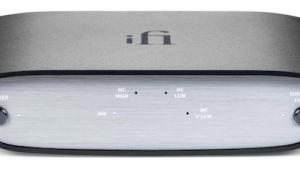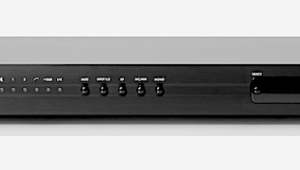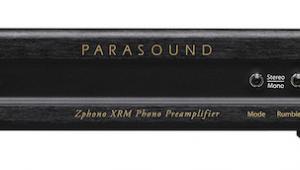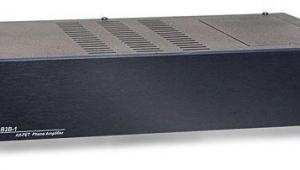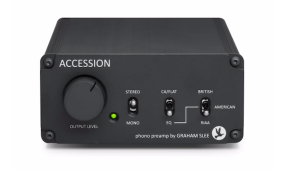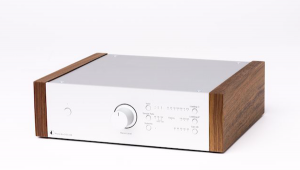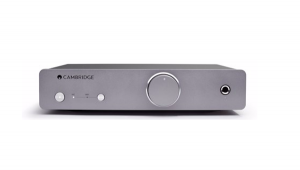Conrad-Johnson Premier 15 phono preamplifier
 I don't recall whether or not every setup included the same cartridge, but in any case, every hour, the hosts would play the same recorded selection on each 'table so listeners could try to hear what each was capable of bringing forth from the grooves. Unfortunately, my schedule didn't allow me to sit for an hour, and anyway, I'm not sure what one could really expect to hear in a large, crowded room.
I don't recall whether or not every setup included the same cartridge, but in any case, every hour, the hosts would play the same recorded selection on each 'table so listeners could try to hear what each was capable of bringing forth from the grooves. Unfortunately, my schedule didn't allow me to sit for an hour, and anyway, I'm not sure what one could really expect to hear in a large, crowded room.
Sitting in my listening room auditioning this $3995 Premier 15 phono section from Conrad-Johnson—a process that I made sure went on for months!—I couldn't help but think of all of the phono sections I've heard and reviewed over the years, and how convenient it would be to have them all here to compare to the C-J. But I feel reviewing is not and has never been about making those kinds of impossible comparisons. While some readers would like to have a lineup and a hierarchy, that's an impossible task—and in any case, what might work best in my system might not in yours.
After months of listening to the Premier 15, and as I shuffled through my scribblings, about to sit down and write this review, UPS showed up with Audio Research's new $6000 Reference phono section. There it sits on the shelf, cold, as I write this. There it will remain until this review is handed in.
Can you understand why this job can lead to madness? What about the FM Acoustics 122 I reviewed in March 1997, which I said was essentially neutral? Where does that fit in now? Where does the new AR Reference go? Or the $699 Lehmann Black Cube, the Audio Research PH3SE, the Pass Ono? The Ayre phono section built into the K-1 preamp, which is now my reference? The next two phono sections I've already committed to review? In the meantime, cables and accessories have come and gone, as well as cartridges, turntables, arms, upgrades. Sure, I have a "reference" system, but it cannot remain static; inevitably, parts of it have changed over the years.
So, having cleared my head (and maybe yours?), let's dig into the Premier 15. It's a deceptively straightforward zero-feedback design, meaning it had better have low distortion to begin with—there's no distortion-reducing "safety net" of a negative feedback loop. The input signal feeds the first amplifier stage—a pair of paralleled 12AX7 twin triodes per channel. The output is routed to a passive RIAA network featuring better 1%-tolerance resistors and capacitors, the output of which feeds yet another 12AX7-per-channel gain stage. Two 5GK5s provide a cathode-follower output stage for low source impedance.
So why should such a straightforward circuit design cost so much? Lew Johnson told me that in order to avoid noise and distortion, and to maintain equal gain between the channels during manufacturing and for years to come, high-tolerance parts and channel matching are essential. This eats up worker-hours and greatly increases component costs.
Conrad-Johnson lavishes the same attention to detail on the power supply, which uses all polypropylene and polystyrene capacitors in the DC regulation circuit instead of the more commonly used electrolytics. (There are electrolytics in the less critical heater circuit.) There are separate regulators for each of the amplifier stages, and for the buffer stage. Johnson eschews the use of electrolytics (they're "evil," he says) because of their propensity to store the "ghost" of the previously stored signal even after the cap discharges—this is due to dielectric absorption. This ghost signal then gets mixed in with and discharged with the next stored signal. Not a good thing—especially in the signal path.
And not that I needed convincing. Back in the stone age (1979-80), when the sound of capacitors became a big issue, I replaced or bypassed every cheap capacitor in my Hafler DH 101 preamp with polypropylenes and polystyrenes. The same-value poly cap is much bigger and heavier than the equivalent electrolytic; when I was finished, the Hafler's formerly empty, lightweight chassis was so heavy it literally flexed when picked up. I could barely get the cover back on.
But the sonic transformation exceeded my most fervent expectations. The improvements in image focus, rhythmic certainty, tonal purity, bass authority—you name it—were astonishing.
One of the reasons for the Premier 15's large size and gaudy retail price is its capacitors. "They're expensive and take up a lot of real estate," Johnson told me, "but they sound better, don't dry out, maintain their value, and have a long life."
Other noteworthy features of the Premier 15 include a "floating" circuit board to reduce microphonics (you have to remove four transit screws), and a minimalist approach to RFI rejection, which C-J feels can degrade the sound. Instead, the instructions urge the end user to pay attention to choice and placement of interconnects in order to avoid interference and noise.
Setup & Placement
Conrad-Johnson recommends 47k ohms for most cartridges, but they do include an internally mounted DIP switch so you can easily experiment with five loading values. The switch is out of the circuit in the 47k "default" position. Johnson recommends listening using the switches to select different values first, then, once you decide on a value, hard-soldering the appropriate resistors in parallel with the 47k ohms ones already in place. For a variety of reasons best discussed in "Analog Corner," I've backed off from my "all moving-coil cartridges should be loaded down" dogma; after experimenting with the DIP switches, I chose to leave the Premier 15 at 47k for all the cartridges I auditioned.
- Log in or register to post comments





